Zipwake interceptors, dynamic trim control installed and tested
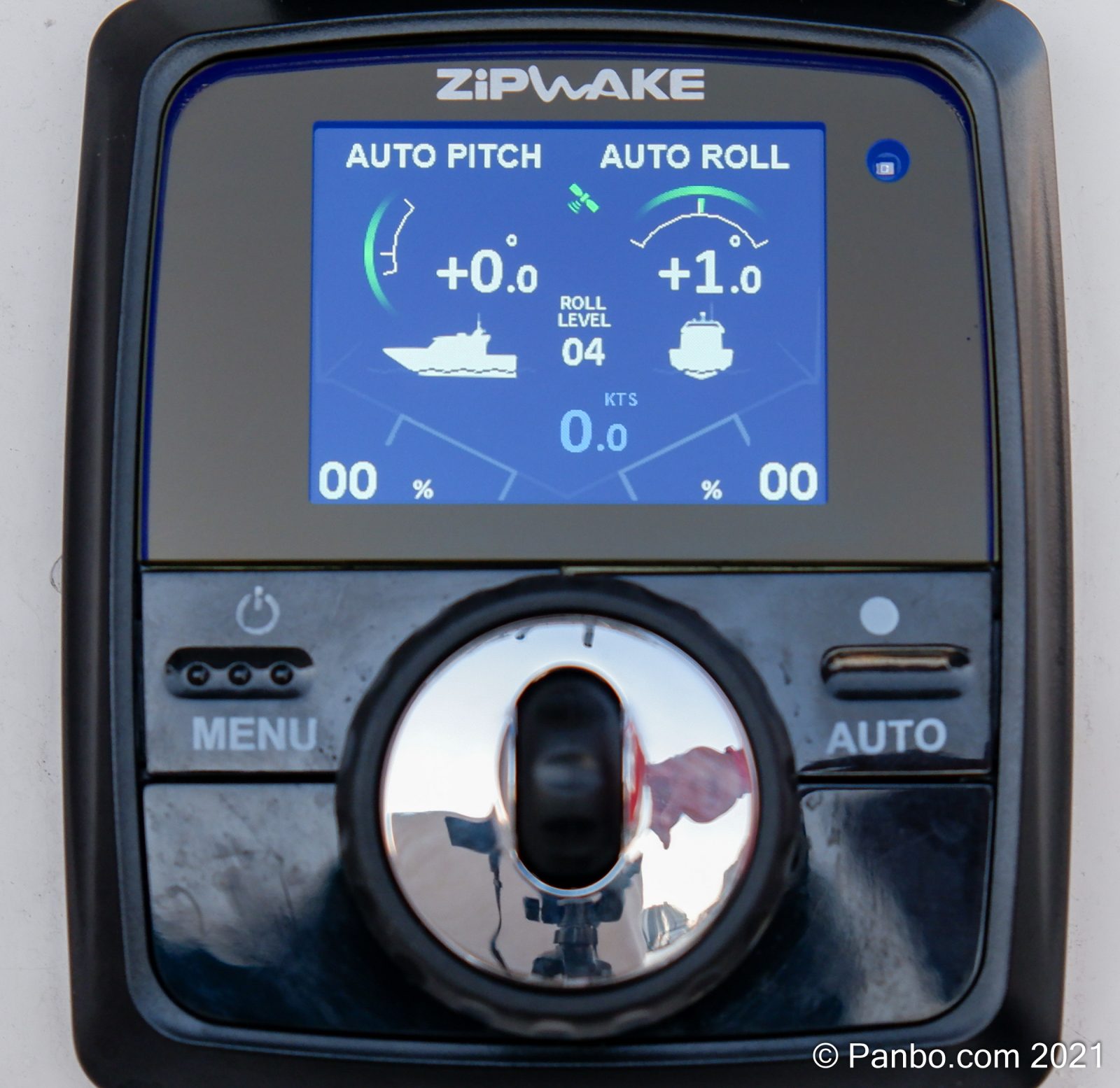
Last fall I installed Zipwake interceptors on Panbo(at), my 22-foot center console, to help control motor torque list, level the boat while running, and reduce some rolling. At first, I was highly impressed by the design and quality of the hardware, but I had some concerns about its automatic control mode. However, after some tuning by an Imtra field technician — Imtra is the exclusive U.S. Zipwake distributor — I’m sold.
Interceptors vs trim tabs?
Zipwake uses interceptors to control trim and roll. Unlike traditional trim tab systems with horizontal planes that extend behind the boat and tip down into the water, the vertical guillotine-style interceptors extend below the transom and into the flow of water passing under the boat. Imtra has an in-depth comparison of interceptors and planes that breaks down the advantages and disadvantages of each system.
Zipwake’s interceptor blades can move full stroke in 1.5-seconds which allows the system to respond quickly to changing conditions. Their systems are available for boats from 20 to 100 feet, and can utilize up to six interceptors to control both pitch (fore and aft motion) and roll (side-to-side motion).
Installation
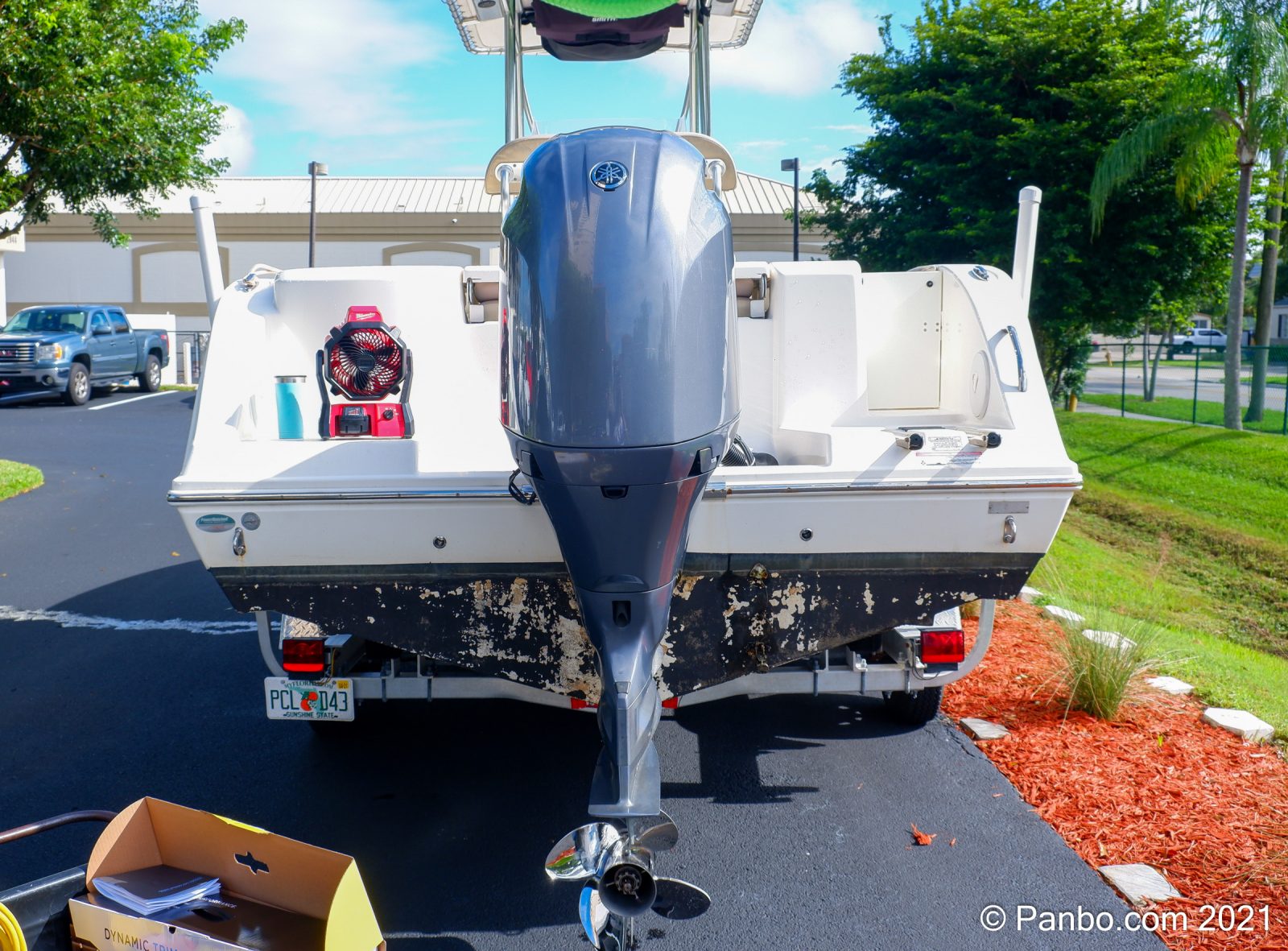
You’ll likely notice the condition of Panbo(at)‘s bottom paint in the install picture above. When I bought the boat less than a year ago, that paint was fresh. But I quickly learned that the bottom wasn’t properly prepared before it went on. So putting a significant redo aside, I went to town with a palm sander to get the area under the interceptors clean and flat.
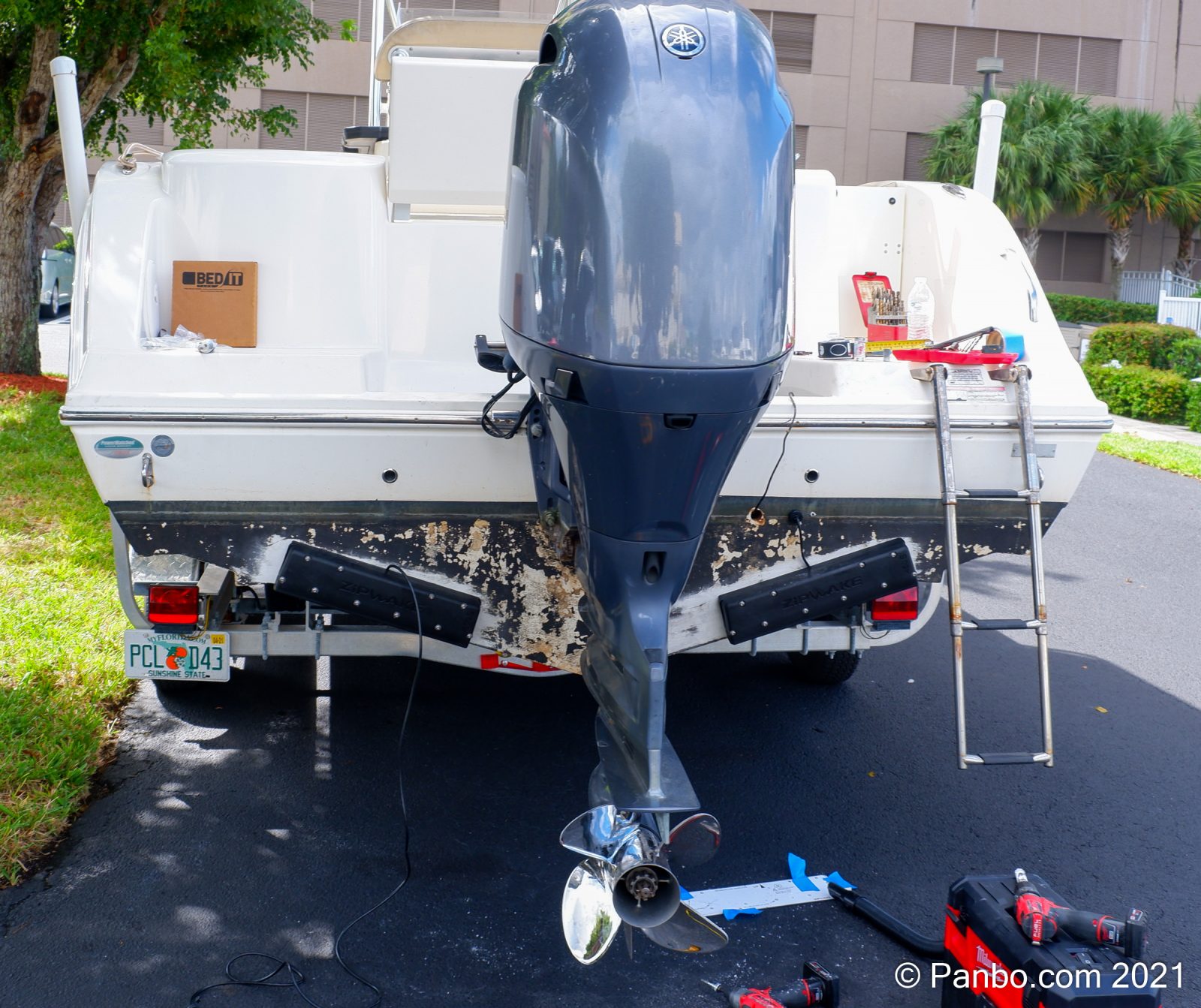
The physical installation was straightforward and took half a day with help from some of my boat neighbors. I was cautious to install the interceptors flush with the lower edge of the transom and symmetrical distances from the keel. The job isn’t difficult but each unit is held on with ten lag screws and, because the interceptors are below the waterline, it’s important to properly seal each hole.
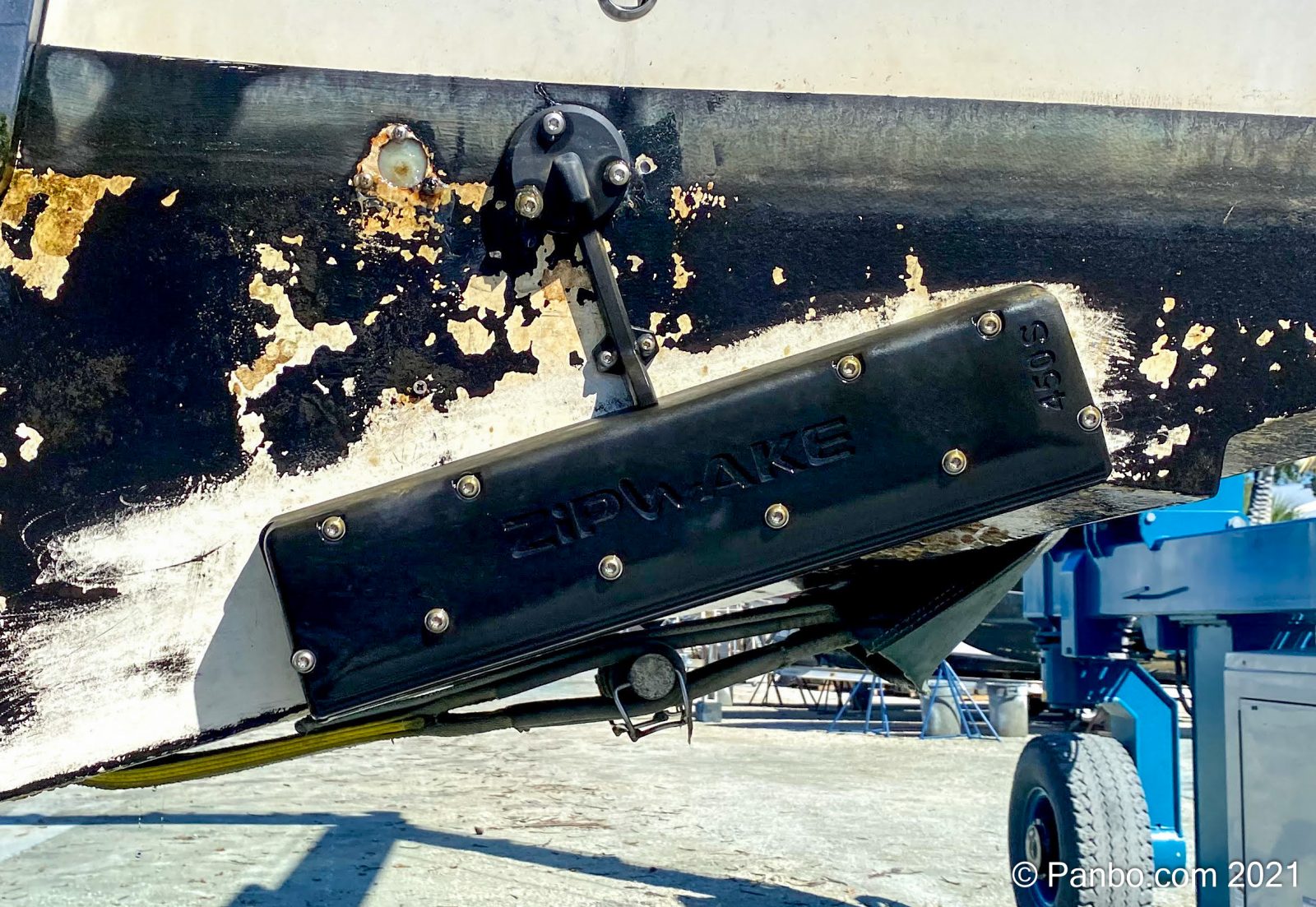
The system uses clever cable glands to pass the control cables through the transom. They can be located directly behind the interceptor or a few inches above it, as I ended up doing, and they require no sealant. Despite initial concerns, I haven’t seen a drop of water come through the hull.
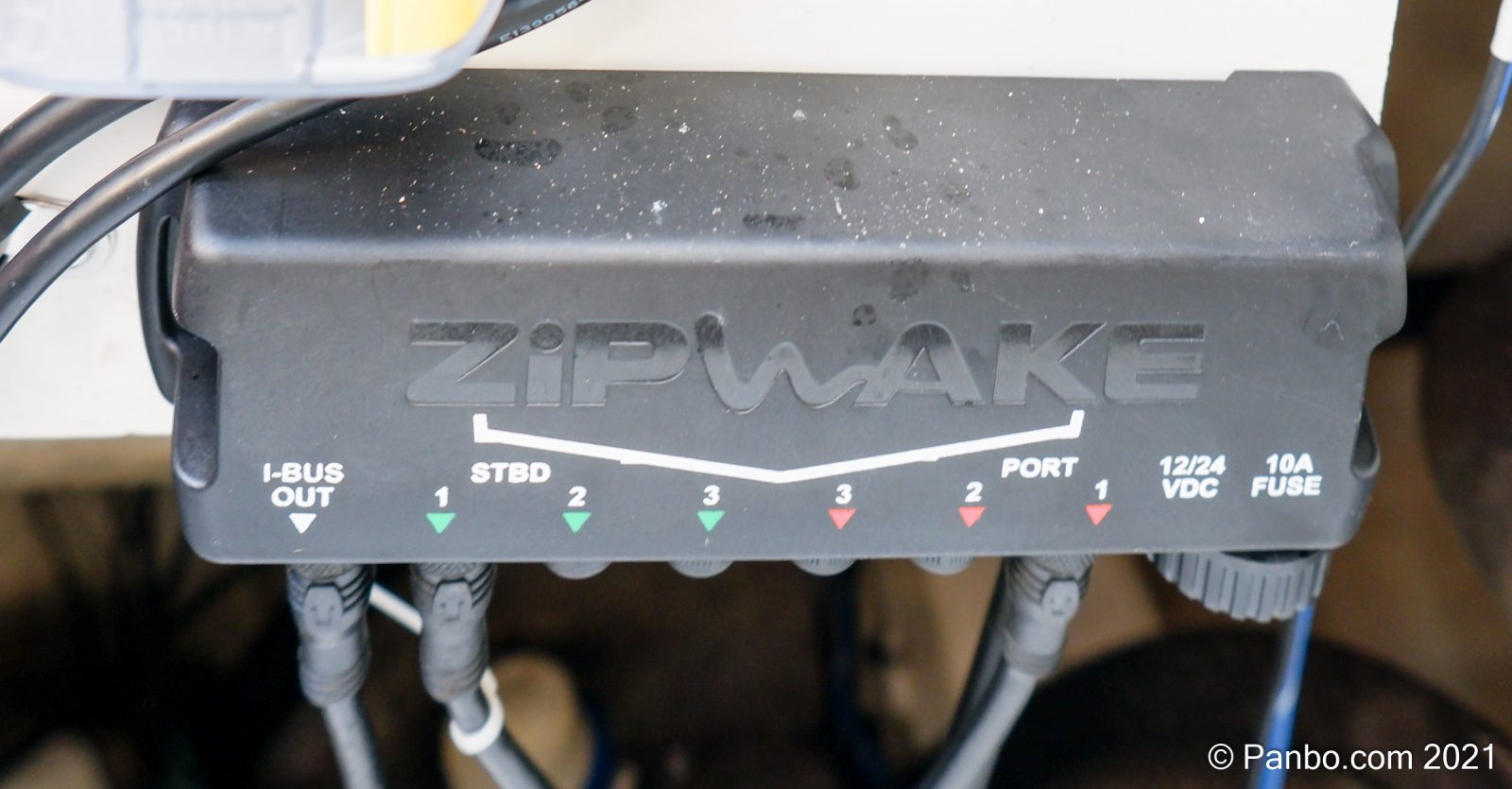
Each interceptor’s only connection is a single cable that carries power and control signals from a distribution unit, which also connects to the boat’s power and the control/display module. Up to six interceptors can be installed and the system accepts both 12 and 24 volt DC inputs.
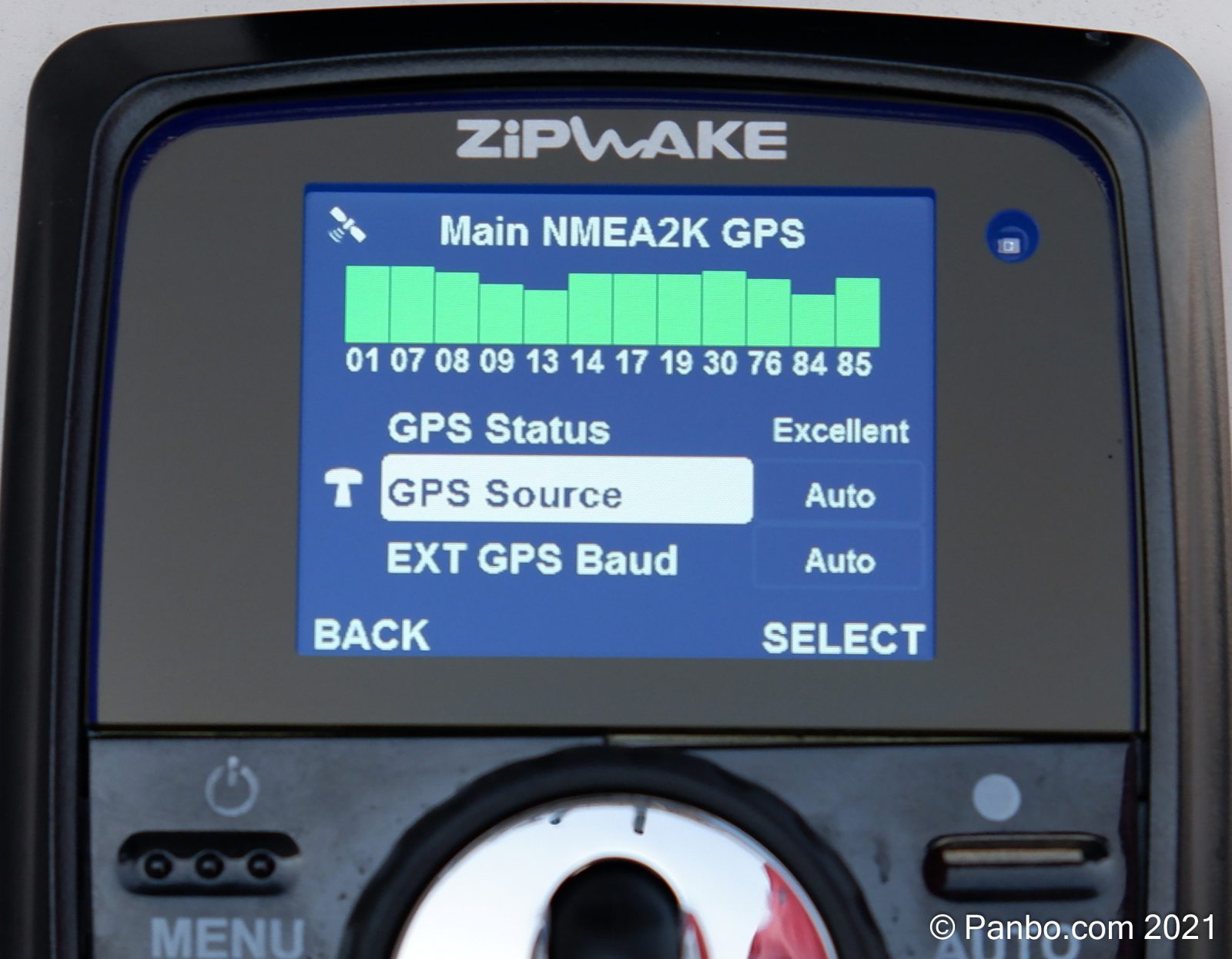
Finally, you install the display at the helm, run the its cable back to the distribution unit, and connect power. I also added the display to the boat’s NMEA 2000 network so that it can get GPS information from there as well as sharing interceptor status with other displays using trim tab PGNs. So I can see blade extension on my MFDs, but the controller can be installed standalone using its own GPS and gyro.
The Zipwake system has thorough self-test capabilities, so I could verify the install while the boat was still on the trailer. And a quick interceptor test showed that power consumption and travel were all within the expected ranges, as shown above . Thus I called the installation a success and moved on to on-the-water testing.
On-the-water performance
As soon as I got underway with Zipwake I could feel its effect. The boat planed at a lower speed and stayed on plane longer when slowing. Also, Panbo(at) usually has a couple of degree list from prop torque, and Zipwake eliminates this with about ten percent extension on the port blade. But I had some reservations. I felt that the system made the boat feel a little nervous on plane; the blades would move and pull the boat from side to side. Plus, I wasn’t sure the bow’s movement was controlled as much as I expected.
Based on these concerns, an Imtra representative came for a boat ride and helped me fine-tune the system. A few small adjustments made a big difference. Reducing the system’s sensitivity and tweaking how much and when it deployed the blades all but eliminated the nervous handling.
To be clear, Zipwake lets you manually control the extension of interceptors on both sides of the boat or the system can control them automatically. There’s a choice of auto pitch and roll control, or just auto pitch, and they can be modified on the fly.
Pitch control
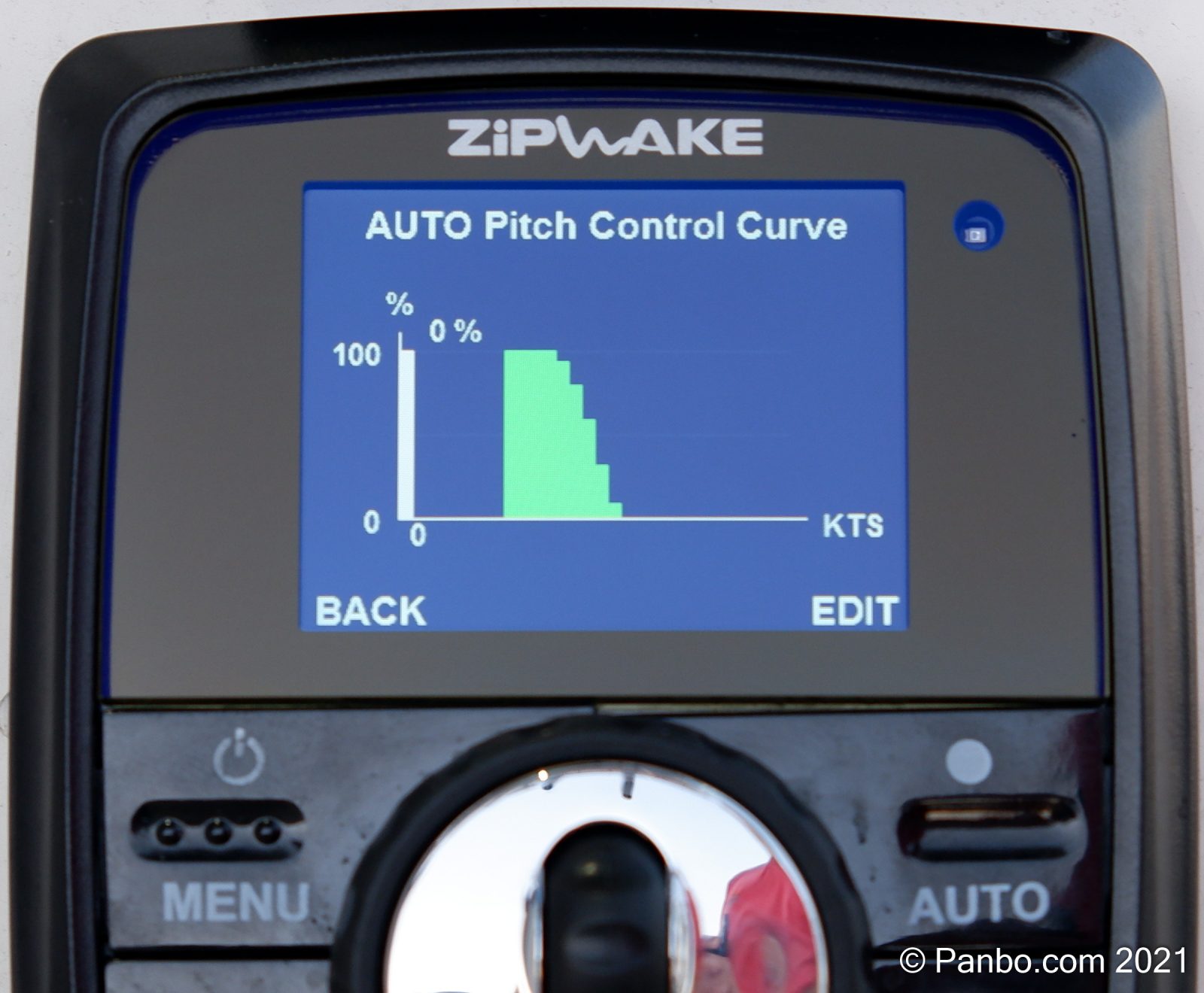
Automatic pitch control uses the interceptors to maintain the fore and aft trim of the boat at a pre-set level contingent on the boat’s speed. These pre-set levels are defined in a pitch curve that visually portrays blade extension at each speed, with speed along the X-axis and extension on the Y-axis. The curve above calls for 0% extension until the boat reaches eight knots, and then 100% up to about 12 kn. Beyond 12, the settings that work well for Panbo(at) reduce deployment to 0% at 17 knots.
Panbo(at) ran very well on plane without any tabs and I’ve found that extending the blades didn’t improve the performance once the boat is fully on plane. The settings that work for my boat are probably different than what work for others, and may even be different among owners of the same boat with different preferences.
To overide the settings, you can use the scroll wheel in the center of the controller to push the bow down (roll the wheel forward) or set a higher bow running angle (roll it backward). To save current blade extension to the pitch curve, you press in on the outer ring for three seconds and the pitch curve will be updated.
Roll control
Unlike most traditional trim tabs, Zipwake’s blades can control a boat’s underway roll by generating lift that counteracts the roll force. I have experienced some roll reduction when encountering wakes on the beam, but not to the extent that active stabilizers can provide, whether gyroscope or fin. But Zipwake seems quite effective at keeping the boat fairly level. As people weight moves around, Zipwake adjusts to keep the boat flat. And the faster I go, the more effective the trim control, since more water is passing under the blades. This is true for roll, pitch, and steering control.
Steering mode
Zipwake can steer a boat by deploying one blade at a time to create drag. The video above demonstrates the get-home feature, first at low speed and then on plane. I frequently end up oversteering, but I don’t have a ton of practice steering the boat this way. Panbo(at) is a single-engine boat with Dometic’s Optimus all-electric steering system, and if this high-tech system fails I’ve always assumed a tow was in my future. But with Zipwake’s steering, I’m confident I can get the boat back to the dock. The last part especially might not be pretty, but it sure beats the alternative.
The hardware
Zipwake’s hardware is user-friendly, feels well made, and has proved reliable so far. The interceptors have a sturdy plastic housing and I like how they are turtle-like the blades retracted; there’s nothing extending behind or below the boat except the housing. I’m also a fan of the Interceptor Check and health report screens found in the display’s settings area.
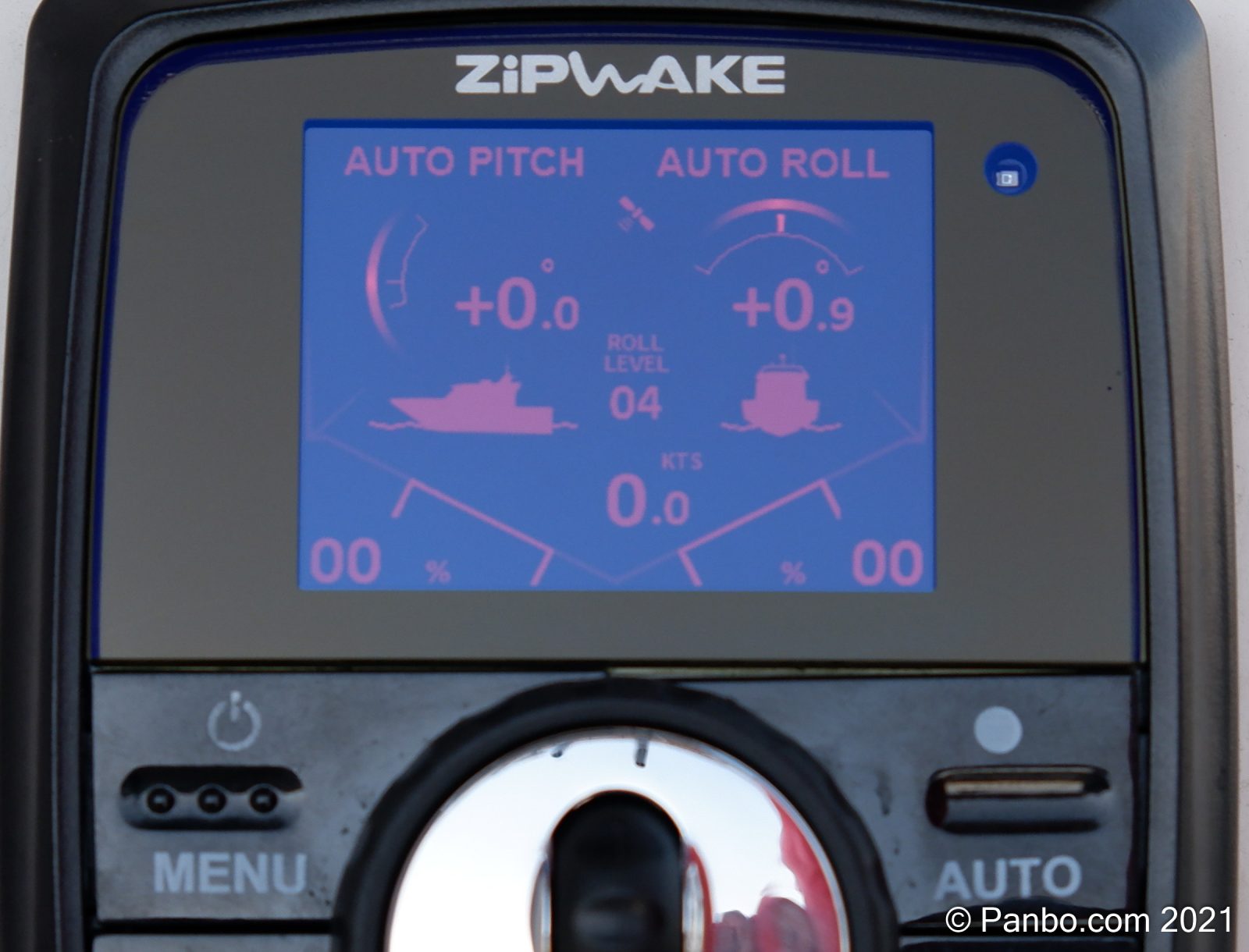
The helm display unit offers a great deal of control over the system, even while maintaining a simple and intuitive user interface. But I do wish that it was brighter; it’s hare to read in direct sunlight, especially the dark blue speed with its black background. The unit does have a light sensor so it can automatically dim the screen to night mode, but I think a white background with dark text would be easier to read in bright conditions.
The Zipwake system installed on Panbo(at) consists of two 450mm interceptors, the distribution module, and control head with a total list price of $2,890. By contrast, a Bennett Bolt electric trim tab system sized for a 22-foot boat lists for $682, plus $710 for an automatic control unit for a total of $1,392. That makes Zipwake about twice as expensive, but for that added $1,498 you get faster response, speed-determined pitch settings, NMEA 2000 interface, and steering mode.
Final thoughts
Overall, I’m really pleased with Zipwake. The system feels like an improvement over traditional tabs in nearly every respect, and since the successful tweaking, I haven’t had to think about the boat’s trim. Zipwake manages all that for me, including prop-torque-induced list and trim changes when the crew moves around while we’re underway. Plus, steering mode gives me peace-of-mind in the event of outboard steering failure. Zipwake is more expensive than traditional tabs, but it also delivers more.


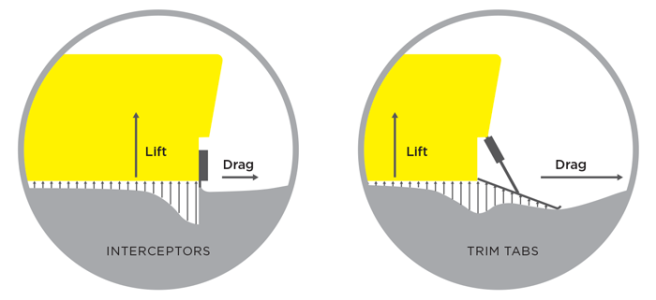
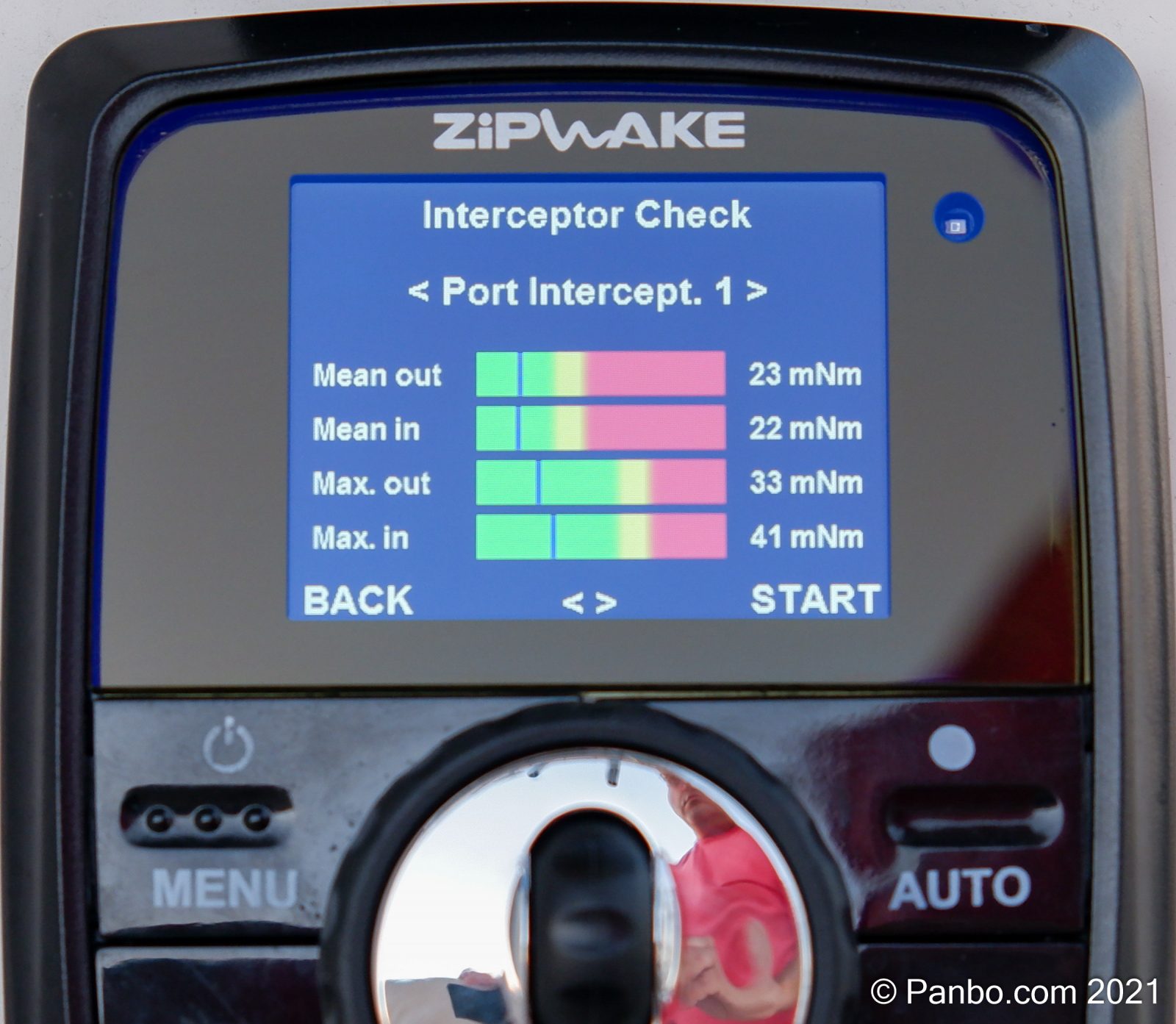
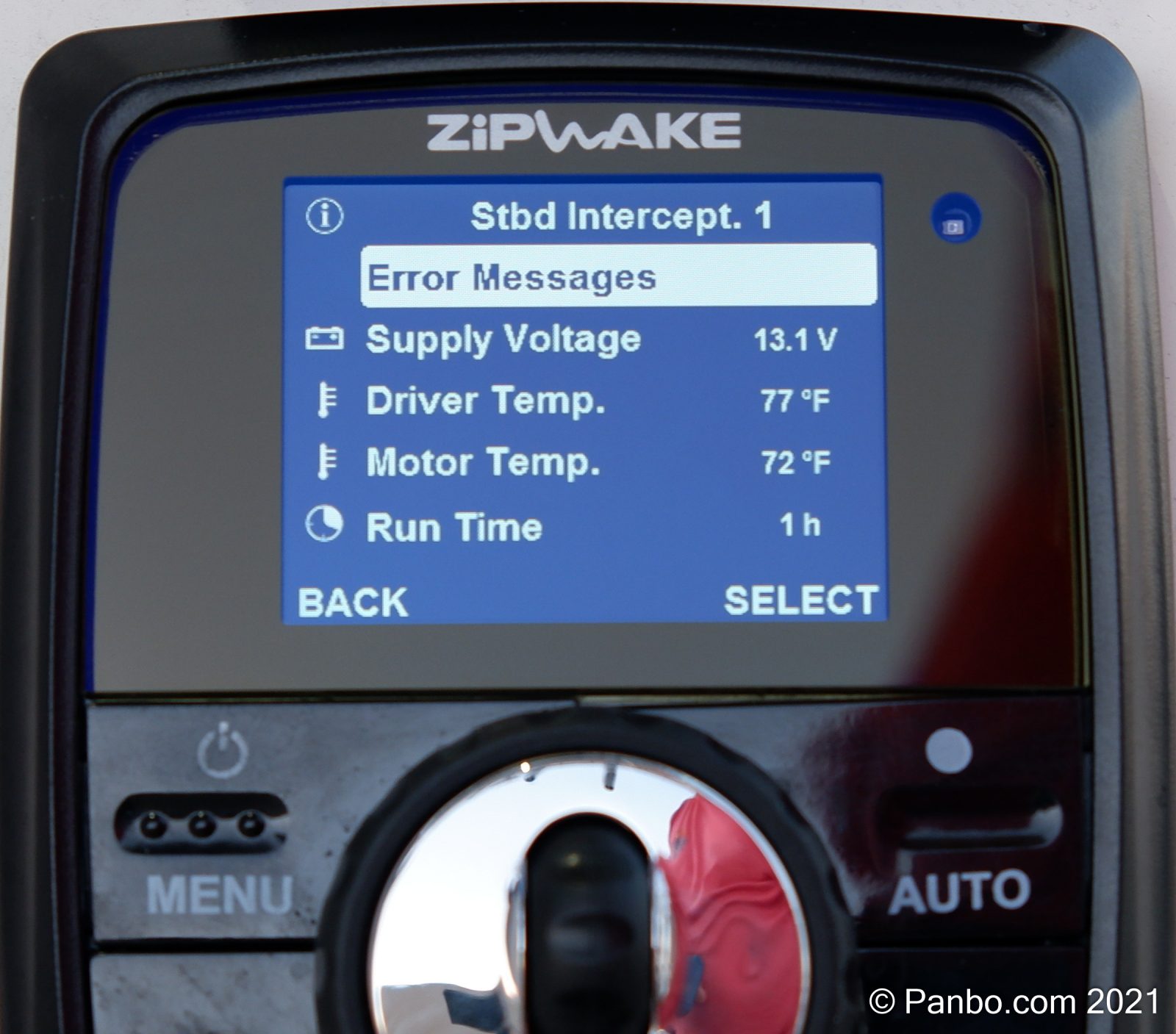












In Europe the Bennett is much more expensive, and the zipwake is much cheaper, so it has a great price/ quality ratio, better than traditional trimtabs with automatic systems.
I have installed the e series Zipwakes on a 70 foot yacht. I removed Bennett tabs to do so. The boat travelled from Florida to the Great Lakes via the St Lawrence River. Other then getting some debris in one of the units requiring a quick dip to clean it, the units worked flawlessly. I would never go back to Trimtabs.
I’ve had these in for one summer season and so far, great. My boat is a 26′ center console. They really do work as advertised. The systems from the other electric trim tabs manufacturer in Florida had automatic systems but they were too slow in the reaction time and it was difficult to use properly. Not these. These things are quick. I replaced a set of Lenco’s that were operating fine after 5 years and 600 hours. The upgrade has been nice and really just enjoyable. The kids no longer have to worry about hitting the big stainless blades of the old system (which was a real issue on my boat). The US distributor was great to deal with, they answered all my emails and calls. Cheers from an icy n. virginia.
Does the zipwake save fuel?
Assuming an electrical supply was worked out – I wonder if a Zipwake could ever be modified to reduce the roll of a sailboat whining running or anchored?